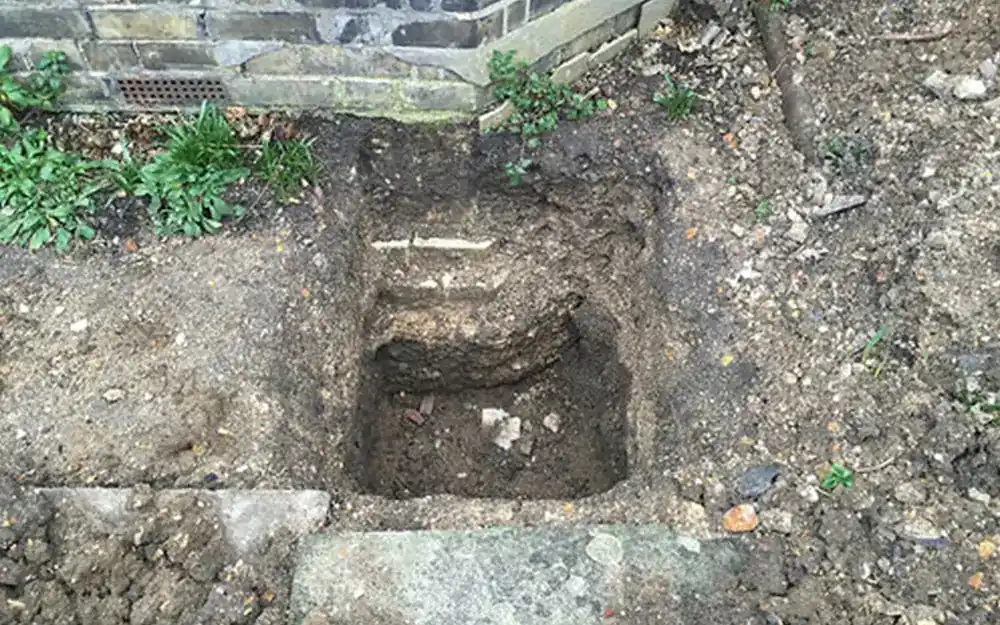We speak to a lot of customers convinced that rats have burrowed under their foundations to emerge beneath their floors.
This is an alarming thought as, if it were true, how can this possibly be stopped?
Well luckily it isn’t true for the vast majority of cases.
How deep are our foundations?
There are 2 types of foundation essentially:
1). Brick footings
Before man discovered cement, he would simply create the footings of a building from bricks in a ‘stepped’ format as bricks and lime mortar was all he had.
Victorian and Edwardian buildings are all built this way and the foundations are quite shallow at 300 – 400mm (as bricks are expensive to buy and lay down).
However the ‘stepped’ format makes them very difficult to burrow under.
Rats will always start to burrow hard against the elevation brickwork so when they hit the first step they have to start burrowing backwards which is difficult to do.
2). Concrete footings

After around 1930, cement was widely available and so man started to pour concrete foundations rather than make them out of brick.
This was a much cheaper and quicker process so much deeper foundations could be put in place as you simply had to dig a trench and pour it in.
Concrete foundations are therefore typically in the 900 – 1800mm range.
They have shear sides (so no stepped arrangement to foil burrowing rats) but their great depth makes it very difficult for the rats to bypass.
Usually the footing is wider than the brick wall that sits on it too so any rats that burrow down against the elevation brickwork quickly hit the foundation shoulder and stop there.
What are rats physically capable of?
Rats can dig but they aren’t that suited to it.
If you look at the anatomical differences between a rat and mole you will see what I mean – moles are built for digging whereas rats are more a multi-tasker.
Sure they can dig when they have to but deep burrowing isn’t what they are about.
Their front limbs are dexterous with long claws far more suited to handling objects, gripping and climbing.

They won’t randomly dig for the sheer hell of it – they nearly always dig in corners or burrow along something due to thigmotaxy (a behavioural trait where they stay in contact with vertical surfaces).
Quite often rat burrows can be seen against the foundations of walls but these are actually rats burrowing out of lintel bridges just below the surface.
Lintel bridges are gaps in the foundations deliberately made to pass services through (drains usually). As drain runs are about 400 – 1000mm deep and foundations are 900 – 1800mm deep, you have to get the drain run to pass through the foundations somehow so the builders just stop the foundations either side and rest the brick walls on 2x concrete beams.

If a defect is present to the drain run passing under the building, rats will emerge from this defect, burrow along the side of the pipe (thigmotaxy remember?) and then burrow up at the lintel bridge point as its just below the surface.
They will also burrow out from the cavity walls at the lintel bridge points as the cavity is open between each concrete lintels.
So burrow holes are typically them burrowing out – not burrowing in.
And whilst it probably is physically possible for a rat to burrow under a house foundation if he/she thought their life depended on it and were clued upon on architectural history, the reality of the situation is that it hardly ever happens.
If you do see burrow holes by the side of your house, check to see if a service pipe passes through the foundations below – I bet it does and I bet it’s a drain!



